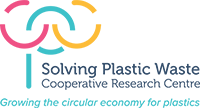A new report – Assessment of agricultural plastics and their sustainability: a call for action – by the Food and Agriculture Organization of the United Nations (FAO) suggests that the land we use to grow our food is contaminated with large quantities of plastic pollution, posing an even greater threat to food security, people’s health and the environment than ocean litter.
According to data collated by the agency’s experts, agricultural value chains use 12.5 million tonnes of plastic products each year. A further 37.3 million tonnes are used in food packaging. The crop production and livestock sectors were found to be the largest users, accounting for 10.2 million tonnes per year collectively, followed by fisheries and aquaculture with 2.1 million tonnes and forestry with 0.2 million tonnes. Asia was estimated to be the largest user of plastics in agricultural production, accounting for almost half of global usage.
In the absence of viable alternatives, demand for plastic in agriculture is only set to increase.
Such trends make it essential to balance the costs and benefits of plastic. Of increasing concern are microplastics, which have the potential to adversely affect human health. While there are gaps in the data, they shouldn’t be used as an excuse not to act, FAO warned.
